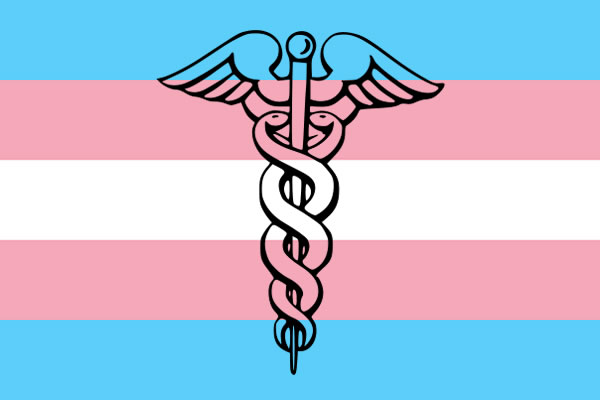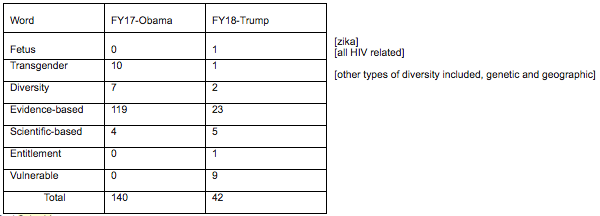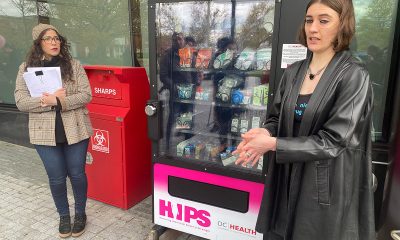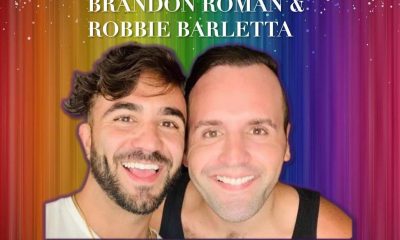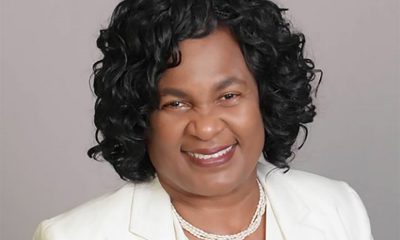Miscellaneous
Report of banned words at CDC alarms LGBT health experts
U.S. agency insists ‘no banned, prohibited or forbidden words at the CDC’
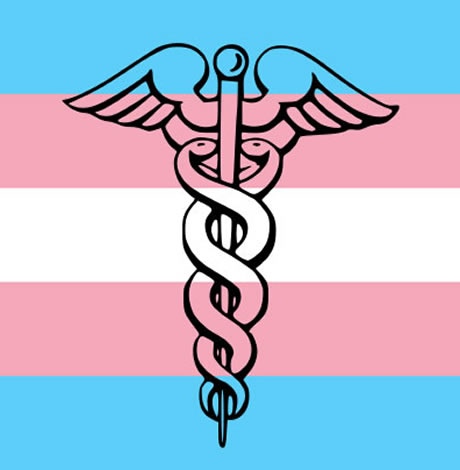
A recent report in the Washington Post that the Centers for Disease Control is barred from using certain words like “fetus,” “diversity” and “transgender” in budget documents alarmed LGBT and HIV/AIDS health experts, although the agency disputes the characterization of the story.
In an article published Friday, the Post quoted an anonymous analyst who took part in a meeting in Atlanta on Thursday as saying CDC was forbidden to use seven words in documents for the fiscal year 2018 budget request. Those words are “vulnerable,” “entitlement,” “diversity,” “transgender,” “fetus,” “evidence-based” and “science-based.”
The reported ban on those words ignited a firestorm among LGBT advocates in particular of the reported ban on the word “transgender.” The prohibition on the words “diversity,” “evidence-based” and “science-based” also caused concern because of the implications of those words for the LGBT community.
In the view of many LGBT advocates, the report reinforced the widely held belief the Trump administration is seeking to eliminate any mention of LGBT people from public life, which includes efforts this year to eliminate LGBT questions from federal surveys. HHS ended up reinstating a sexual orientation question to a federal health survey for older Americans, but kept out the gender identity question.
Daniel Bruner, senior director of policy for the D.C.-based Whitman-Walker Clinic, expressed uncertainty about the report on the basis the administration is sending mixed messages, but said “we’re very concerned.”
“The CDC is critical for HIV prevention and treatment issues and one of the most heavily affected or really devastated communities by HIV is transgender women, and there’s growing concern about how to address prevention needs in particular of transgender women and the realization that there needs to be a lot more research and a lot more funding going into that community,” Bruner said. “For the CDC to be told when you’re submitting budget documents, don’t talk about transgender people, or even use the term is potentially horrifying.”
Bruner pointed to the CDC’s own estimates on the impact of HIV on transgender women. The U.S. agency cites a 2013 National Institute for Health report that found an estimated 22 percent of transgender women have HIV.
The reported ban on the use of the word “diversity” is also concerning, Bruner said, because it would mark a reversal from the Obama administration when “there was kind of a growing realization of the federal government to put a lot more effort and a lot more research into health inequities that affect particular communities…like the LGBT community.”
Carl Schmid, deputy director of the AIDS Institute, said a major concern for HIV/AIDS policy advocates is the reported ban on use of “evidence-based” and “science-based” in budget documents.
“Everything that we do is evidence-based,” Schmid said. “We treat people for HIV, we test people for HIV. How frequently and the messages for sex-ed are all evidence-based. Why do we start treatment early? Why do we get people tested? It’s all evidence-based. And condoms. Everything that we do is scientific- and evidence-based.”
Asked what programs in particular would be imperiled if CDC was unable to use the reportedly banned words, Bruner said, “at this point we don’t know enough,” but cited programs that focus on HIV and transgender women as well as programs studying health inequities among LGBT people.
“Just as a general matter, when you have the administration telling one of its chief scientific agencies don’t use the words ‘evidence-based’ or ‘science-based,’ that would really be of great concern,” Bruner added.
But CDC is disputing the account of banned words at the agency in budget documents or in any other capacity.
Brenda Fitzgerald, director for the Centers for Disease Control, said in a statement “there are no banned, prohibited or forbidden words at the CDC — period.”
“I want to emphasize to anyone who may believe otherwise that we continue to encourage open dialogue about all of the important public health work we do,” Fitzgerald said. “CDC has a longstanding history of making public health and budget decisions that are based on the best available science and data that benefits all Americans — and we will continue to do so.”
Fitzgerald added “confusion” arose from a staff-level discussion at a routine meeting about how to present CDC’s budget, which she said “was never intended as overall guidance for how we describe and conduct CDC’s work.”
Based on conversations he had with Trump administration officials, Schmid said he thinks the seven words might not be banned, but the CDC has guidance in place not to use them.
“I don’t think these words are banned,” Schmid said. “I think people are saying that could be a mischaracterization. I think it was guidance and suggestions, and I think people took it too far, but I think it’s good that the story got out there and there’s a reason why people are acting this way because there has been some editing of documents.”
An analysis by the AIDS Institute found a distinct difference in word usage in budget documents in FY-17, the final budget request for the Obama administration, and FY-18, an early budget request of the Trump years.
The word “transgender” came up 10 times in Obama-era documents, but only once in the Trump era. Additionally, the word “diversity” came up seven times in Obama documents, but only two times in Trump documents. The phrase “evidence-based” came up 119 times in the Obama documents, but only 23 times in the Trump documents.
“Nothing has impacted the programs,” Schmid said. “They’re still doing transgender prevention programs. That has not changed.”
What’s the reasoning for the guidance against certain words in budget documents? Schmid cited speculation they were edited out to appease a Republican-controlled Congress.
Schmid said he was cautious about that reasoning because he doesn’t understand why Republicans would object to “evidence-based” and “science-based” terminology or resist HIV funding for transgender people because they’re the most in need of treatment.
“It comes back to the whole sex ed controversy and the whole abstinence only until marriage,” Schmid said. “That seems to be an area where the debate over science-based and evidence has been up in the air, debated. It’s not that we debate it, but the politicos debate it.”
Schmid also said “part of the issue” might be social conservatives Trump appointed to administer HHS. Among them is Roger Severino, a former Heritage Foundation scholar who once criticized transgender healthcare, but is now in charge of defending it as director of the Office of Civil Rights.
The White House referred a request for comment to the Department of Health & Human Services, which didn’t respond. The Office of Management & Budget, which prepares budget documents, didn’t respond to a request to comment on whether there was any administration-wide guidance on banned words.
Sarah Kate Ellis, CEO of the LGBT media watchdog GLAAD, said in a statement OMB should follow suit and deny the report to make clear banned words aren’t part of an administration-wide policy.
“The Office of Management & Budget owes this country full transparency about their alleged promotion of dangerous censorship that harkens back to the days that HIV and AIDS research and funding were restricted with deadly effects,” Ellis said. “We cannot and will not allow hateful ideology, bigotry and personal bias determine the health can wellness of the transgender community – which has been serially targeted for erasure under the Trump administration.”
Miscellaneous
What it means to be an active ally to your LGBTQ+ co-workers TEST
Five easy tips to help you avoid common risks
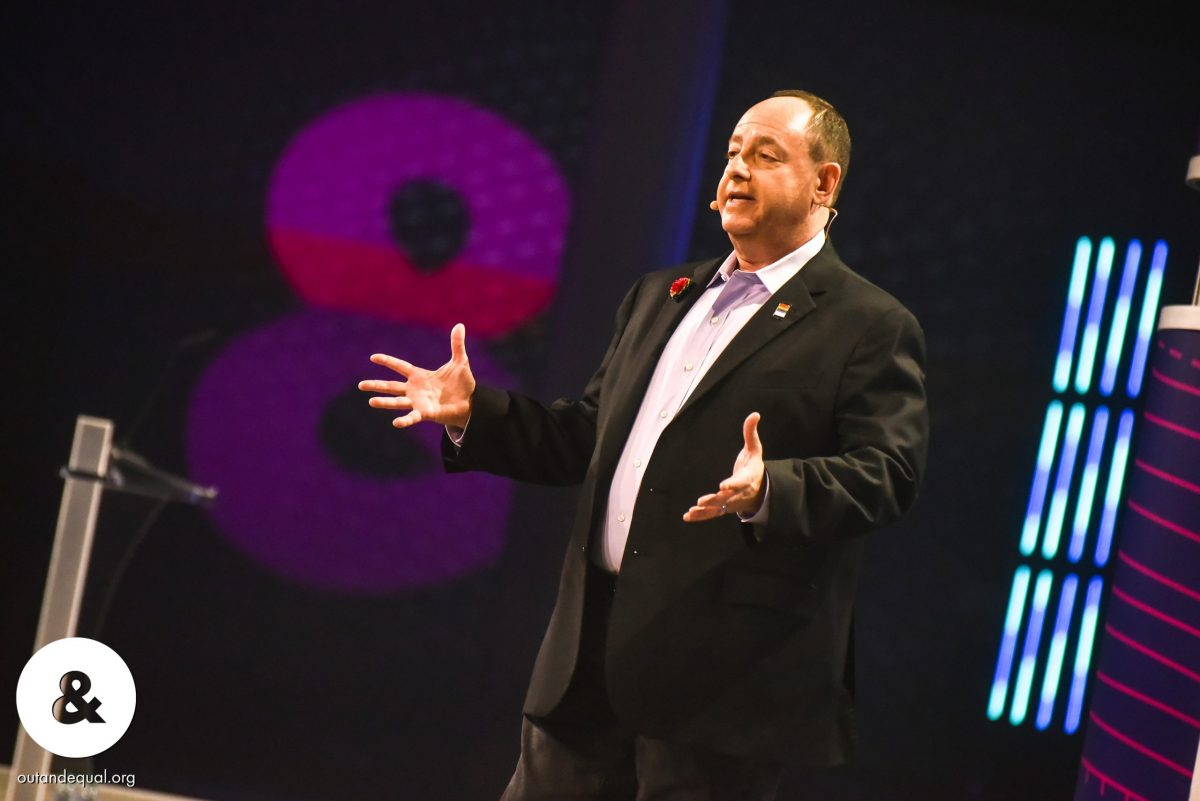
Your home is more than just a place to eat and sleep; it’s your safe haven. As much as you might cherish your home, you should probably also recognize the potential hazards within its familiar walls. Accidents can happen in an instant, yet with a little foresight and some simple adjustments, you can transform your house into a safer haven.
Accidents can happen anywhere, and with a few simple tweaks, you can lower risks in your space. Below you’ll find five tips for each room in your home to help prevent injuries, falls, and other mishaps. In short, home safety.
This article was inspired by a shower in a rental we managed that began leaking through the kitchen ceiling below. If only the landlord had installed grab bars, right!? Below, we’ll guide you through the steps to fortify your bathroom, making it a place of relaxation without the fear of slips and falls. Then, we’ll venture into the room where the magic happens, where proper planning can ensure great nights and peaceful mornings. We’ll show you how to prevent accidents while you experiment becoming the next Gordon Ramsey. And we’ll include a few surprising solutions for those other rooms that hold their own unique hazards, offering solutions to safeguard against unexpected mishaps.
Bathroom Safety
Install Grab Bars: Adding grab bars near the shower and toilet can provide essential support for family members of all ages. Not only can they help with getting in and out, but they can help provide stability when washing. Make sure they are securely anchored to the wall.
Non-Slip Mats: Place non-slip mats inside the shower and bathtub to prevent slips. They’re a small investment that can save you from falls and head injuries.
Adjust Water Temperature: Ensure your hot water is set to a safe temperature to avoid scalding. The hot water heater should be set to around 120°F (49°C)l, the middle setting on many water heater settings.
Medicine Cabinet Locks: If you have young children, use childproof locks on your medicine cabinet to keep harmful substances out of reach.
Proper Lighting: Ensure there’s adequate lighting in the bathroom to avoid trips and falls during nighttime visits. Nightlights can be a simple and effective solution.
Bedroom Safety
Clear Pathways: Keep pathways in the bedroom clutter free to prevent tripping. Ensure there’s enough space to move around comfortably, particularly getting around the bed. Be aware where all furniture is when walking around to avoid stubbed toes, particularly at night.
Secure Rugs: If you have throw rugs, use rug grippers or double-sided tape to keep them from slipping. Loose rugs are a common trip hazard.
Bed Rails: For anyone at risk of falling out of bed, consider installing bed rails to provide extra support and prevent falls.
Nightstands with Drawers: Opt for nightstands with drawers to keep essential items. This reduces the need to get out of bed at night, minimizing the risk of falls, as you race to grab what you need and not lose a moment’s rest.
Fire Safety: Install battery-operated smoke detectors in the bedrooms if there are none. Make sure to install them 36 inches away from an air vent or the edge of a ceiling fan. Also six inches away from the joint between the wall and ceiling. And test smoke detectors regularly.
Kitchen Safety
Non-Slip Flooring: Choose slip-resistant rugs in the kitchen, especially in areas where spills are common. Mats near the sink and stove can also help and you can often buy them fairly cheaply at Costco.
Childproof Cabinets: If you have little ones, use childproof latches on cabinets and drawers to prevent them from accessing potentially hazardous items.
Anti-tip brackets: Install an anti-tip bracket behind the range. These are often used when children are in the home. Although they are less likely to open the oven door and use it as a step stool to get to the stove-top, adults can also benefit from installing these.
Adequate Lighting: Proper lighting is crucial in the kitchen to avoid accidents. Under-cabinet lighting can illuminate work areas effectively.
Secure Heavy Items: Ensure heavy pots and pans are stored at waist level to prevent straining or dropping them from high shelves.
Sharp Object Storage: Keep knives and other sharp objects in a secure drawer or block. And handle all sharp items with extreme care, even when washing and drying. These steps reduce the risk of accidental cuts.
Other Safety Tips
Furniture Anchors: Secure heavy furniture, like bookshelves and dressers, to the wall to prevent tip-overs, especially if you have young children.
Adequate Outlets: Check for damaged outlets and replace them promptly. Avoid overloading circuits with too many devices. Install placeholder plugs in outlets to prevent young curious fingers (or tongues?) from going inside an electrical outlet.
Stair Gates: If your home has stairs, install safety gates at the top and bottom to prevent falls, especially if you have toddlers or pets to keep them off of the stairs when you cannot monitor them.
Emergency Escape Plan: Develop and practice an emergency escape plan with your family, including a designated meeting place outside.
Carbon Monoxide Detector: If your home burns any fossil fuels for heating or appliances, install carbon monoxide detectors in common areas of your home to detect this odorless gas. The D.C. building codes require this if you use a fireplace or if you have an attached garage. In essence, if there is any potential source of carbon monoxide in the home, be sure to install these detectors.
Remember, a safer home not only prevents accidents but also provides peace of mind for you and your family. Implement these simple tips to create a secure environment in every room of your house.
With these practical tips and a few adjustments, you can significantly reduce the risk of injuries and falls in your home. Enjoy peace of mind in your now much safer haven.
Scott Bloom is owner and senior property manager of Columbia Property Management.
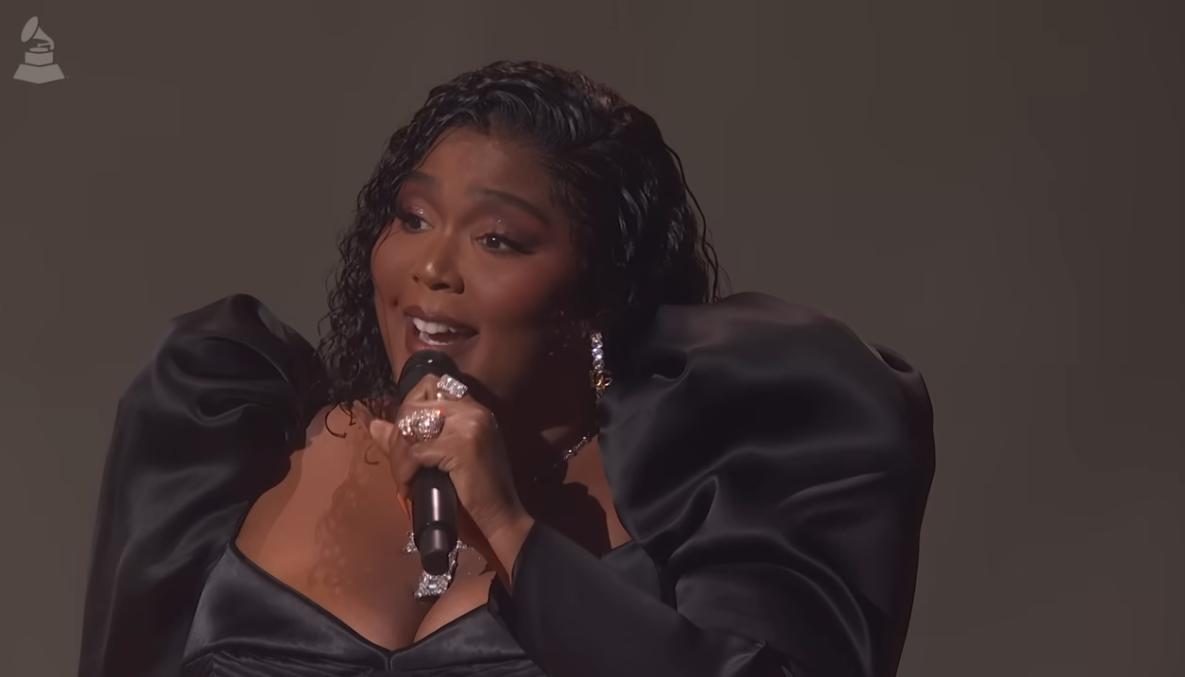
When Lizzo sings “If I’m shinin,’ everybody gonna shine,” in her hit song, “Juice,” she means it. Proof of that came this week on Instagram when the LGBTQ ally announced the first winner of her annual Juneteenth Giveback Campaign is the Marsha P. Johnson Institute, a national nonprofit based in Richmond, Calif., dedicated to the protection and defense of Black transgender people.
And she did so in song: “On the first day of Juneteenth, Lizzo gave to me,” she sang in her video, posted Tuesday, as she revealed her $50,000 gift to MPJI.
“That’s right, we know who Marsha P. Johnson is. We know what Marsha P. Johnson has done for the LGBTQ, emphasis on that ‘T,’ Q community,” said Lizzo to her 13.5 million followers. “Thank you so much to the people at the Marsha P. Johnson Institute. You deserve this, and I hope this helps you so much as you help protect our Black trans family.”
“What the Marsha P. Johnson Institute does is protects and defends the rights of Black transgender people. They do this by organizing community, advocating for the people, and creating an intentional healing community, developing transformative leadership and promoting collective power,” she said.
“We are overjoyed for the shoutout from Lizzo today, the generosity of her sharing her platform and the recognition of MPJI and its work,” said Elle Moxley, MPJI’s executive director. “The resources from this campaign will ensure the protection and defense of Black transgender people continue at a time where it is so vitally needed. We are so grateful for the support of Lizzo and her fans.”
As one of Time Magazine’s Persons of the Year for 2019 and a 2023 Grammy winner, Lizzo is more than a pop star but an inspiration to millions of fans for her body-positive attitude, her self-confidence on stage and in her videos, her empowering music and her activism. She’s also the founder of her own clothing line, Yitty. In 2021, she made headlines when she publicly corrected a paparazzo for using “she/her” pronouns and misgendering Demi Levato.
As part of her campaign, now in its 4th year, Lizzo recognizes Black-led grassroots organizations and businesses and encourages her fans to join her in supporting each of the five organizations she highlights this week. Fans who take action by donating are entered into a drawing for an all-expenses paid trip to see her perform at Fuji Rock in Japan later this year.
This week’s other nonprofits receiving gifts are: Black Girls Smile, Sphinx Music, the University of Houston and Save Our Sisters United.
Find out more about Lizzo’s 4th annual Juneteenth Giveback Campaign by clicking here.
Celebrity News
Anne Heche dies after removal from life support
Actress dated Ellen DeGeneres in late 1990s

Actress Anne Heche died after she was removed from life support on Sunday, nearly two weeks after her Mini-Cooper crashed through a two-story house in Los Angeles’ Mar Vista neighborhood. Investigators with the Los Angeles Police Department believe she was intoxicated at the time.
She sustained a severe anoxic brain injury along with severe burns and was being treated at the Grossman Burn Center at West Hills Hospital, near Chatsworth in the San Fernando Valley.
The 53-year-old actress who was a star of films like “Donnie Brasco,” the political satire “Wag the Dog” and the 1998 remake of “Psycho,” had been declared legally dead under California law on Friday, however, her family kept her alive long enough to be an organ donor.
In a statement Friday, the LAPD announced that: “As of today, there will be no further investigative efforts made in this case. Any information or records that have been requested prior to this turn of events will still be collected as they arrive as a matter of formalities and included in the overall case. When a person suspected of a crime expires, we do not present for filing consideration.” LAPD detectives had previously made public that investigators into the crash found narcotics in a blood sample taken from Heche.
The actress’s family released a statement on Friday:
“Today we lost a bright light, a kind and most joyful soul, a loving mother, and a loyal friend. Anne will be deeply missed but she lives on through her beautiful sons, her iconic body of work, and her passionate advocacy. Her bravery for always standing in her truth, spreading her message of love and acceptance, will continue to have a lasting impact,” the statement added.
Heche was married to camera operator Coleman Laffoon from 2001 to 2009. The two had a son, Homer, together. She had another son, named Atlas, during a relationship with actor James Tupper, her co-star on the TV series “Men In Trees.”
Laffoon left a moving tribute on an Instagram reel in which he also gave an update on how their 20-year-old son Homer Laffoon is coping with the loss of his mother.
“I loved her and I miss her, and I’m always going to,” he said adding: “Homer is okay. He’s grieving, of course, and it’s rough. It’s really rough, as probably anybody can imagine. But he’s surrounded by family and he’s strong, and he’s gonna be okay.”
“Rest In Peace, Mom, I love you, Homer,” the actor’s 20-year-old son, Homer, said in a statement after Heche was declared legally dead on Friday.“ My brother Atlas and I lost our Mom,” read the statement. “After six days of almost unbelievable emotional swings, I am left with a deep, wordless sadness. Hopefully, my mom is free from pain and beginning to explore what I like to imagine as her eternal freedom. Over those six days, thousands of friends, family, and fans made their hearts known to me. I am grateful for their love, as I am for the support of my Dad, Coley, and my stepmom Alexi who continue to be my rock during this time. Rest In Peace Mom, I love you, Homer.”
Tupper, a Canadian actor who starred alongside Heche in “Men in Trees,” had a 13-year-old son, Atlas, with her. “Love you forever,” Tupper, 57, wrote on his Instagram post’s caption with a broken heart emoji, which shared an image of the actress from Men in Trees.
Between 1997 and 2000, Heche was also in a relationship with talk show host Ellen DeGeneres.
“This is a sad day,” DeGeneres posted on Twitter. “I’m sending Anne’s children, family and friends all of my love.” The year after her break-up with the comedian, in September 2001, Heche recounted in her memoir “Call Me Crazy,” about her lifelong struggles with mental health and a childhood of abuse.
KTLA’s entertainment reporter Sam Rubin noted that over the past two decades, Heche’s career pivoted several times. In 2017, she hosted a weekly radio show on SiriusXM with Jason Ellis called “Love and Heche.”
In 2020, Heche made her way into the podcast world. She launched “Better Together” which she cohosted alongside Heather Duffy Boylston. The show was described as a way to celebrate friendship.
She also worked in smaller films, on Broadway, and on TV shows. She recently had recurring roles on the network series “Chicago P.D.,” and “All Rise” and was a contestant on “Dancing with the Stars.”
People magazine reported that several of Heche’s acting projects are expected to be released posthumously.
These include “Girl in Room 13,” expected to be released on Lifetime in September, “What Remains,” scheduled to be released in 2023, and HBO Max TV series “The Idol,” created by Abel Tesfaye (The Weeknd) and Euphoria creator Sam Levinson.
In her Instagram post from earlier this year Heche stands between her sons Atlas, 13 and Homer, 20.
From KTLA:
-

 South America4 days ago
South America4 days agoDaniel Zamudio murderer’s parole request denied
-

 Maryland5 days ago
Maryland5 days agoMontgomery County police chief discusses arrest of trans student charged with planned school shooting
-

 State Department22 hours ago
State Department22 hours agoState Department releases annual human rights report
-

 Theater4 days ago
Theater4 days ago‘Amm(i)gone’ explores family, queerness, and faith

